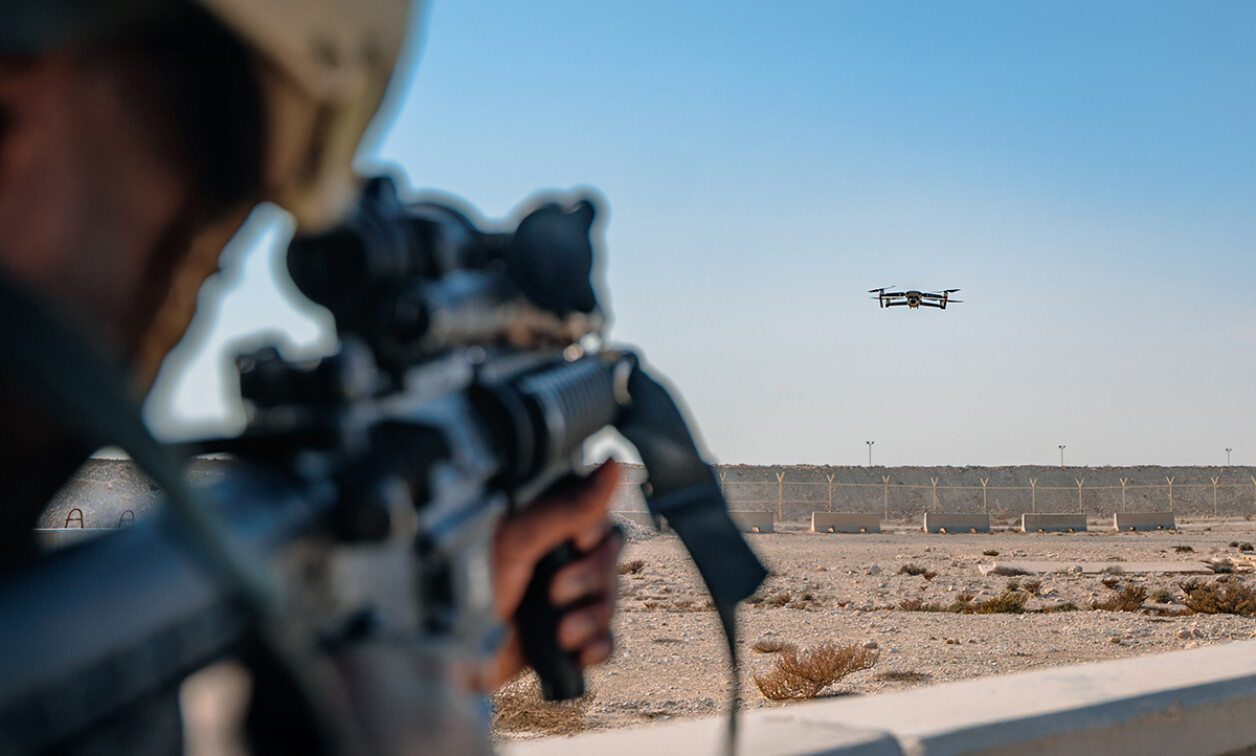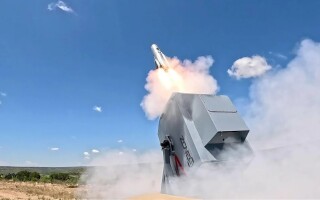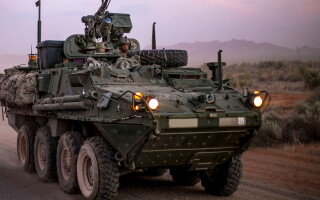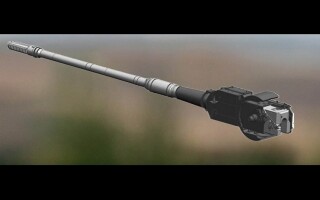Defeating UAS threats requires complex and flexible solutions
StoryApril 11, 2025

Uncrewed aerial systems (UASs) provide a decisive advantage on the battlefield for the U.S., its allies, and its adversaries. However, complex UAS tactics and proliferation makes countering them a challenge of approach, acquisition strategy, and technology.
The weaponizing of uncrewed aerial system (UAS) technology is not new, but many would agree it has kept the Ukraine in the fight against a numerically superior foe with much deeper resources. UAS technology is a force multiplier on the battlefield; faster acquisition of such technology can actually make the difference between victory and defeat.
The same is true when developing the technology to counter the threat: Faster acquisition of sophisticated commercial radar, processing, and radio-frequency (RF) technology with open architecture designs will enable faster deployment of counter-drone solutions to the fight.
“Yes, faster acquisition is part of the response,” says Dave Toomey, AVP, Business Development, SRC (Syracuse, New York). “System fielding and upgrades must keep pace with the evolving threat, so we seek ways to rapidly adapt, test, and deliver to the force. But we – collectively, military partners and industry – have learned much more from the C-UAS [counter-UAS] efforts in Ukraine. The UAS threat has shaped the modern battlespace, and C-UAS will remain an essential force-protection tool set and skill set for years to come.” The technology, of course, is very important, but these systems must be considered in the context of their use among other elements, like training, kinetic versus nonkinetic rules of engagement, nontechnical updated tactics, the operational environment (urban, open terrain, littoral), and the like.
Ukraine is just one example of the benefits of faster deployment of defense technology.
“The ongoing war in Ukraine is the obvious example, but there are touchpoints and examples at all levels of national and international activities that are informing requirements and solutions,” Leo McCloskey, VP of Marketing at Echodyne (Kirkland, Washington). “It’s probably best to say that the current flashpoints are sharpening requirements that will lead to better counter-UAS systems acquisitions, but the acquisition process remains an obstacle to rapid systems evolution that matches quickly evolving threats. Existing systems that can be swiftly and cost-efficiently modified or adapted for the counter-UAS task, such as adding radar to existing RWS [remote weapons systems], are increasingly attractive to both counter-UAS system operators and procurement and acquisition organizations.”
Small UAS platforms are causing much of the havoc on the battlefield.
“The proliferation of small UASs has introduced a new dimension to modern warfare. These widely available and increasingly sophisticated platforms serve multiple purposes, from reconnaissance to weapon delivery systems or even as sacrificial or expendable jammers. Their small size and exceptional maneuverability make them elusive targets for traditional radar systems,” writes Nate Knight in a Military Embedded Systems article (January/February 2025) titled ʻThe evolving battlefield: How radar technology is advancing in the age of advanced electronic warfare and C-UASʼ: “Further, the ability to deploy large numbers of small UAS in coordinated swarms overwhelms traditional tracking and engagement systems. This threat landscape demands radar systems capable of detecting, tracking, and classifying multiple small, agile targets in complex environments while maintaining the ability to manage traditional threats.”
As threats get more complicated, so does the response to the threat, whether it’s hypersonic missiles or a small swarm of drones in an urban environment.
“What we’ve observed in our over two decades of C-UAS development – and even longer in radar and electronic warfare (EW) systems – is that the threat is constantly evolving,” Toomey says. “Our military and security partners require technical solutions that are flexible, adaptable, and easily upgradeable to keep pace with this evolution.
“Today’s threat environment resides on a spectrum – from small commercial drones to large military/nonstate UAS platforms; from individual harassment and surveillance drones to complex swarms, explosives-delivery, and indirect targeting applications,” Toomey continues. “This requires us to deliver C-UAS solutions that are scalable to meet each customer’s unique operational environment and mission needs.
Counter-UAS end users also need to ensure the system costs match the mission.
“Cost-per-kill ratio is important,” Toomey says. “You can spend a lot on defeating a threat that is low-cost. This can be a bad formula. Each of these factors drive our development. Our partners need options. We respond by designing excellent sensors optimized for the mission, by offering a variety of defeat techniques, and by emphasizing smart decision-support capabilities.
Defeating threats with technology
Counter-UAS solutions range from the act of simply shooting one down with a projectile weapon like a rifle to more complicated solutions such as multilevel systems that detect the UAS, track it back to its origin, then take out the drone and launch source.
“To detect and classify a drone, the system may have radars, passive RF detectors, acoustic detectors, or cameras,” Toomey notes. “To counter a drone, various capabilities may be used: jamming, NAVWAR [navigation warfare], guns, lasers, or missiles.” (Figure 1.)

[Figure 1 ǀ SRC supports the U.S. Army Low, Slow, Small UAS Integrated Defeat System (LIDS) family of systems with radar, electronic warfare, direction-finding, and camera systems to detect, track, identify, and defeat groups 1 to 3 UAS (UASs weighing between less than 20 pounds to just under 1,320 pounds.]
Toomey says the capabilities developed must “provide comprehensive airspace and battlefield surveillance while providing mitigation options, all without overwhelming the individual user. “The key requirements are: (1) situational awareness, (2) force protection, and (3) modularity. What this frequently means is our customers need an ecosystem of complementary sensors and effectors that can scale to meet each day’s threat. Our radar, electronic warfare, and decision-support technologies offer detection redundancy. This is important because each sensor and effector has certain strengths and challenges in response to varying UAS technologies and employment tactics.”
Defeating small UAS threats also calls for more mobile counter-UAS systems.
“For maneuver formations, the prevalence of small UASs and other asymmetric threats has necessitated the development of defensive capabilities at the individual vehicle level,” Knight writes. “Equipping vehicles within a formation with their own radar systems enhances operational flexibility and vastly improves the survivability in contested environments. By adopting this distributed model, military forces can better adapt to the evolving nature of electronic warfare and maintain operational effectiveness in the face of emerging threats.”
Requirements also change based on the types of threats, the mission priority, and of course budget constraints.
“The requirements have been shifting over the past few budget cycles in three equally important directions,” McCloskey says. “First, the requirements for accuracy and classification are moving to the top of most lists. The need for long-range awareness will always be an essential element and is capably provided by the current portfolio of exquisite air defense radars. But planners, strategists, and activity in hot zones are confirming a new need to correctly classify the object when it enters the effective kill zone and provide persistent high-precision radar track data to accurately train sensors and direct weapon systems within the kill zone.
“Second, the idea of engagement economics is increasingly influencing many decisions,” he continues. “Engagement economics identifies that the low-cost and supply hurdles for an effective drone attack must be matched by a low-cost and ready supply of effective counter-UAS solutions, from sensors through the C2 [command and control] to the weapon system.
One of the most expedient and low-cost paths to an effective counter-UAS platform is augmenting existing RWS with high-fidelity radar data that trains the optics sensors and provides range, bearing, and range-rate information to the fire control system. (Figure 2.)

[Figure 2 ǀ For counter-UAS applications, Echodyne offers the EchoShield counter-UAS system (pictured). According to Echodyne, recent demonstrations and activity confirmed increased RWS lethality by adding EchoGuard (<1 km or 0.62 mile kill zone) and its sister product EchoShield (<5 km or 3.11 miles kill zone) to existing weapon platforms (cannons, rockets, directed-energy weapons), for a rapid, cost-efficient path to fielding broad counter-UAS capabilities.]
“Lastly, the importance of software releases and a cadence of software-based performance improvements to continually optimize both the radar itself and the relevance of the data output for counter-UAS platforms and solutions are becoming increasingly relevant to solution acquisition and sustainment,” McCloskey says.
MOSA for counter-UAS
Faster acquisition of technology is also enabled by leveraging open architectures or a modular open systems approach (MOSA) strategy. The latter has been mandated by the U.S. Department of Defense (DoD) for all new programs and tech refreshes, as open architectures enable long-term cost savings and interoperability.
“Our systems-design approach complies with MOSA,” McCloskey says. “The idea behind MOSA allows for the platform or system to swiftly integrate components to meet varying needs. As such, it’s a topic that is most pertinent to the C2 software in the counter-UAS solution. What is required at the component level is an intuitive and flexible software approach that incorporates standards-based interfaces (Gigabit Ethernet, TCP/IP) to generate high-quality data and optimize counter-UAS performance.”
Standards often leveraged for counter-UAS solutions include the Sensor Open Systems Architecture, or SOSA, Technical Standard and C5ISR/EW Modular Open Suite of Standards (CMOSS).
SRC’s Protean EW system is designed with MOSA in mind and aligns to the SOSA Technical Standard, Toomey says. “The system is [also] compliant with CMOSS,” he adds. “This is essential for incorporating new techniques and mission sets, and for allowing third-party capabilities to be added into Protean. The goal is to allow us and our customers to be ready and responsive to future threats.” (Figure 3.)

[Figure 3 ǀ The SRC Protean Multi-Mission RF Suite of Systems provides adaptable multi- and joint-domain operations throughout ground, air, sea, space, and cyberspace operations. The suite can be configured to platform and mission needs across the conflict continuum to perform singular or multifunction missions, including counter-UAS operations.]
AI and counter-UAS
Artificial intelligence (AI) and deep-learning techniques are often part of UAS designs, whether it’s leveraged in the platform or the payload. The same is true for counter-UAS systems.
Deep-learning technology can aid with tracking and classifying. McCloskey says his company’s Echodyne’s multiclass classification is based on deep-learning technology built on recurrent neural nets that is “constantly improved through testing, tagging, and machine learning (ML) techniques and then realized in performance via regular software updates.”
The effective reach of weapons platforms can be extended via classification and positional accuracy, which leads to more effective targeting at maximum weapon range, he adds.
AI and ML are present in many different places in defense applications today including radar, Toomey says. “Today’s radars – including SRC’s AESA R1410, R1520, and R1540 advanced radars – not only detect better, but they also classify better. AI/ML plays a role in processing EO/IR camera data. [Our] Protean EW system uses smart decision techniques. Finally, various decision support elements are key for C2.”
“The integration of AI and ML into radar systems is enhancing the ability of these systems to distinguish between threats and non-threats, and to adapt to new electronic warfare tactics in real time,” Knight writes. “AI algorithms can automate the classification and identification of targets, considerably reducing the cognitive load on human operators. Moreover, ML techniques enable radars to dynamically optimize their waveforms based on the current electromagnetic environment and mission requirements. Further, AI-driven radar systems can identify and mitigate various forms of interference and jamming in real time, enhancing sensing performance in contested environments.”
Lead image: Sometimes the old ways are best. Point and shoot. But for complex uncrewed aerial system (UAS) threats, sophisticated countermeasures are needed. Pictured: A U.S. Air Force airman assigned to the 379th Expeditionary Security Forces Squadron aims an M4 Carbine at an unmanned aerial system. U.S. Air Force photo by Airman 1st Class Zeeshan Naeem.







